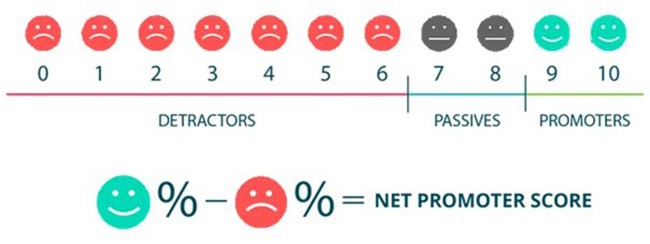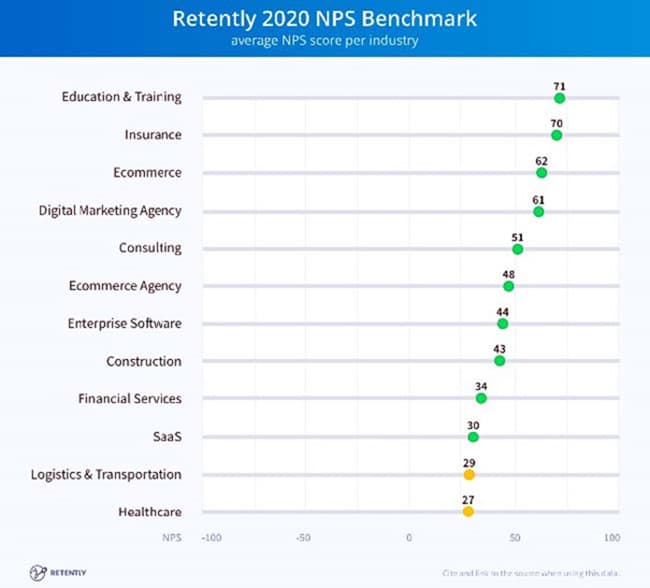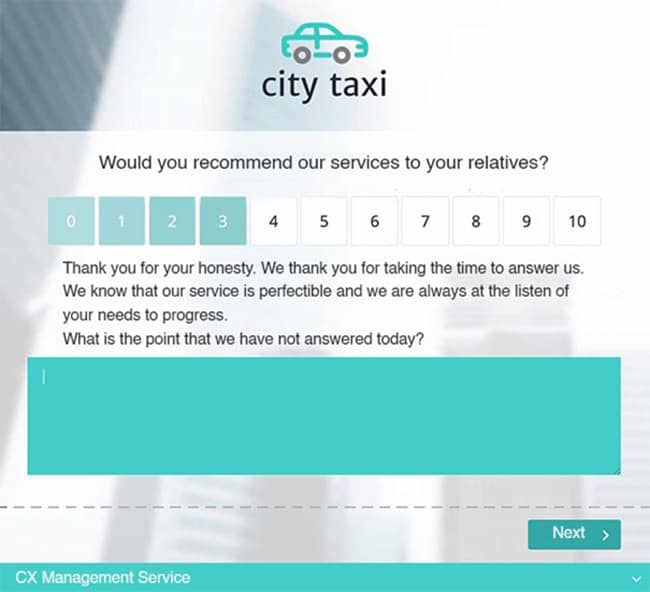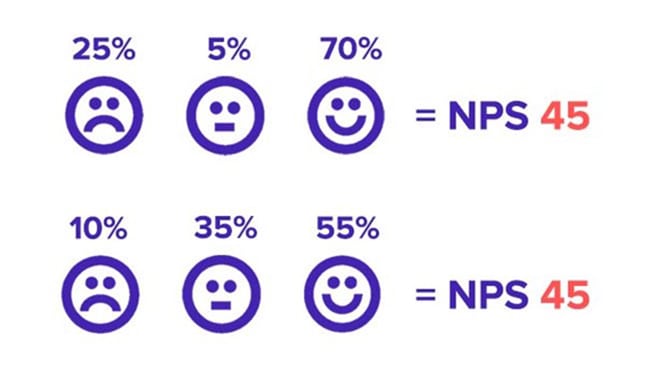What is a good NPS score? A recent study shows that the average Net Promoter Score varies from one industry to another. To find out If your company has a good NPS score, you need to compare it to that of your competitors.
From Skeepers we will then present 3 practical tips to improve your company’s NPS score and beat the competition!
Why Compare your NPS Score to the Competition?
The average Net Promoter Score (or NPS) is one of the main indicators to measure customer satisfaction. It is calculated based on the answers, on a scale of 0 to 10, to this question: “How likely are you to recommend [Brand name, service, etc.] to others?”.

Two NPS Use Cases
NPS has two main functions. It allows to:
- Sort your customers into 3 categories according to their NPS score. Customers who answer between 0 and 6 are your “detractors”, those who choose 7 or 8 are “neutrals”, and those who rate you between 9 and 10 are your “promoters”. This classification is very useful for better segmenting your customers and targeting your marketing actions.
- Build an overall NPS score. This is the “macro” NPS use case. The overall NPS score is calculated by subtracting the percentage of detractors from the percentage of promoters. If you have 50% promoters and 30% detractors, your NPS score will be 20 (50 – 30). Your NPS score can therefore vary on a scale of -100 to 100.
This article will focus on the second NPS use case. Knowing your company’s NPS score enables you to measure your customers’ overall level of satisfaction. But the question that immediately comes to mind is: “What is a good NPS score?”
What is a Good NPS Score?
NPS scores vary a lot from one sector to another. To know how “good” your company’s NPS score is, you need to compare it with other industry players’ average NPS score. There’s no point comparing a professional training centre’s NPS score with a software publisher’s.
Which leads us to another question, that indirectly helps to answer the first: “What is the average NPS score for companies in my industry?”. There’s no easy way to answer this question. Several studies have been carried out, mainly in the US. Let’s take a look at the results of a 2020 NPS Benchmark produced by Retently.
Net Promoter Score Benchmark by Industry
Before we Get Started…
As mentioned above, several companies have carried out NPS benchmarks, such as the excellent Satmextrix.com NPS benchmark. The results are more or less consistent from on study to another, there are no major differences.
Beyond the NPS benchmark results stated below, it is important to investigate yourself too. You could for example, have a look at Customer Guru, which makes industry players’ NPS scores public.

The NPS Benchmark produced by Retently was based on its own customer base. The first observation they made is that no industry has a negative NPS score. The average NPS scores range from 27 to 71.
The education and professional training sectors are top of the table with an average of 71, followed by the insurance industry (70) and ecommerce (62). The below table details the results for the other sectors.

The SaaS (cloud software publishers), logistics, transport and health industries come in last position.
Once again, NPS scores tend to be higher in the US than in France, although unfortunately there is still no French NPS benchmark that provides an exact measurement.
It is possible to draw some general conclusions though. For example, whatever your company or business, an NPS score below 0 i.e., a negative NPS, should be seen as a warning sign. You should be worried about this score. A score between 0 and 30 is an average, or very poor score if you’re in the e-commerce and professional training industry. On the other end of the scale, an NPS score of 70 is always very good and should even be considered as excellent if you work in an industry where the NPS is normally low.
How to Improve your average Net Promoter Score
Ultimately, this is the only question that matters! If your company’s average Net Promoter Score is below or significantly inferior to that of your competitors, it is important to identify dysfunctions and build an action plan to resolve them. Below are three tips to help you with this approach.
1 – Add a Follow-Up Question to your average Net Promoter Score
The NPS question (“How likely are you to recommend…?”) reveals how your customers feel, but not the reasons they feel that way. It is important to know that a customer is unhappy (“detractor”) because he or she gave a score of 2, but it’s even more useful to know why.

Which is why we strongly recommend adding a follow-up question to your NPS one, asking the respondent to explain their score. This is now a very common and highly recommended practice.
You can identify disfunctions by surveying your customers (and particularly your unhappy customers). You can then identify priority areas for improvement and build an action plan to increase your overall NPS score.
2 – Analyse your Overall NPS Score in Detail
If you have 30% promoters and 40% detractors, your will have an NPS of -10.
If you have 10% promoters and 20% detractors, you will have an NPS of -10.
Yet, customer satisfaction is clearly different in both cases.

To correctly interpret your NPS score, you need to do a more in-depth analysis: analyse your customer breakdown in these three categories: promoters, detractors, neutrals. You should monitor your customer breakdown in each category on your dashboards, just like your overall NPS score.
3 – Don’t Neglect your “Neutral” Customers
Customers who answer your NPS question with a 7 or 8 belong to the so-called “neutral” category. These customers are also sometimes referred to as “passive”. The percentage of neutral customers is not taken into account when calculating an NPS score. Yet there are lots of reasons to target this category of customers with specific marketing actions.


















